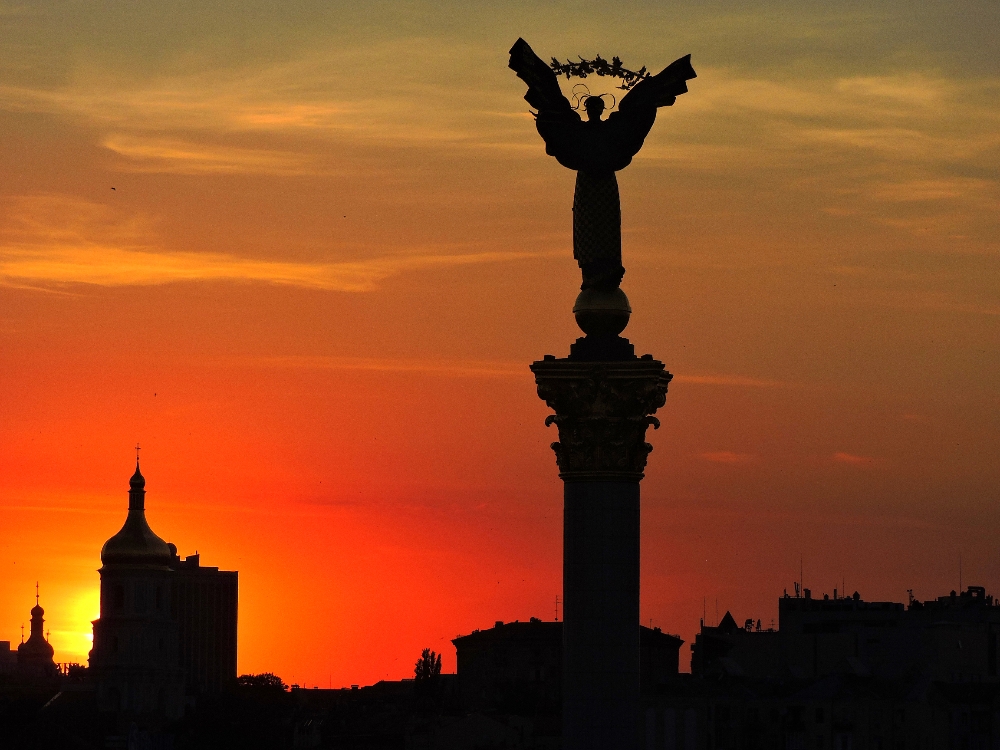The possibility of skipping large portions, or almost all, of my planned route through Europe, because of the travel restrictions imposed during the spring, was something that I would probably have accepted without too much complaint. That was especially true since, by then, I had already visited most of the locations I distinctly wanted to see, which were primarily those related to my family history. Most, but not all, of course, and I was definitely unwilling to give up seeing the last of those places. I still needed to make my visit to Boian, probably the most important of the family sites for me, and that meant I needed to stay in Europe until I was able to travel into, and around, Ukraine. I have already written about Boian, but Ukraine is a large and interesting country with much to see. However, in a similar manner to just about everything during the present year I was not completely confident that my visit would actually happen until I was finally standing on its soil.
Ukraine opened its borders in the middle of June and that made me happy because by then I would only need to make an enjoyable tour through Poland to get there. The actual border crossing, however, proved to be more troublesome than normal, though I suppose I shouldn’t have been very surprised by that fact. I should also have remembered that information found on the Web can often be outdated or incomplete, especially in situations such as this. What I had read mentioned that the first border post between Poland and Ukraine to open was the one closest to Lviv, Ukraine. This was good news for me, since that city was where I was headed next, and so I made my way to that crossing point. When I arrived, the first hurdle quickly appeared. That particular border post was available only for motor vehicles to use. Over the years I have crossed around a hundred land borders and I can’t remember encountering that circumstance before then, but apparently that is not uncommon in Eastern Europe. This was not especially disastrous, however, because, after a few more detailed searches, I learned that two posts to the south was a crossing that pedestrians and cyclists could use. Crossing there would mean one additional day of cycling in Poland, which would be fine, and not excessively detrimental to my schedule.
After traversing that distance I spent the night as close to the border as possible, so that I could attempt to cross early the next morning. I was still not entirely sure that would work because there were additional policies and restrictions required to be met before crossing this newly reopened border. Nevertheless, I was anxious to get through as I had already overstayed my permitted time in the Schengen Zone by sixty days. Thankfully, most countries in that area were behaving reasonably and logically, by declining to impose penalties on people who had overstayed for the simple reason that it was not possible for them to leave. The next hurdle was that citizens of the USA were expected to quarantine for fourteen days upon arrival, and to use a special phone app to monitor their location. I would have needed to find a place to purchase a cheap burner phone to make that work, though I would have been willing to do that, and the two weeks, if that was a firm requirement. However, there were two circumstances that I hoped would mean that neither would be necessary.
Before I even got that far along in the process yet another hurdle appeared. The first Ukrainian guard I encountered scanned my temperature and asked me for a Covid Certificate.
I had read something about that but, once again, incomplete information implied that it would be a form to fill out stating that I had not been in China recently, or perhaps some similar statements. In fact, it wasn’t that, and soon another guard was summoned over, a amiable young woman who spoke English, who informed me that I would have to go back into Poland in order to get that document. I was not sure the Polish side would let me back in, given my aforementioned overstay, and I was not certain exactly what I would need to do in order to obtain the certificate, so my optimism was fairly low at that point.
It was actually no problem to re-enter Poland, but no one at the border post could tell me where I had to go to get the required document. Finally, after asking perhaps ten people, a woman who was working at the adjacent truck-drivers hotel directed me to the supermarket in the tiny border village nearby. That seemed rather odd to me, and, of course, nobody inside the market knew what I was talking about when I asked. There was a Town Hall a couple of blocks away, so I tried there, just in case. The one person working inside directed me back to the market but added the important detail that there was a green kiosk just outside, which was where I needed to go. Indeed, there was, and I was just slightly surprised that in a few moments, the man working there had me set up with a no-questions-asked Covid Certificate, for a fee, of course. Actually, this turned out to be a mandatory health insurance policy. As a personal custom, I normally eschew travel insurance, as being a waste of money, but in this case there was no way to avoid that. Not knowing exactly how long I would need to stay I requested thirty days, for which I was charged seventy US dollars.
Back at the Ukraine gate, there was still the issue of whether I needed to isolate for two weeks, or not. My first plan to avoid that depended on the fact that I now hold dual citizenship. When I formalized my second citizenship, from Canada, a couple of years earlier, many people asked me why I went through all the paperwork and bother just for a second passport. I had several good reasons for doing that but I can honestly say that Well, what if someday the USA becomes an international pariah after botching their response to a global pandemic,
was never a reason that I had considered. So, I hoped that using my Canadian passport to enter Ukraine would smooth things over. It didn’t work. First, my Schengen exit stamp was in my US passport, so they needed to see that, but I was also somewhat shocked to learn that Canada was also considered a Red Zone country since it was my understanding that case numbers were much lower there.
Fortunately, the Ukrainians, including the friendly lady who had helped me previously, had also thought of the second option that would possibly work for me. Phone calls were being made involving much back-and-forth discussions, and, though the Ukrainian language kept me mostly in the dark, I surmised that they were getting approval for me skip the quarantine because I had not actually been in North America since August of 2019, and had, until then, been in Green Zone countries for over two months. After a while I was told that everything was OK, and allowed in. Finally, a case where logic and good sense prevailed! In fact, later that day I learned that another option would have been to take a PCR Covid test upon arrival, and with the negative result the isolation period would not have been required. Though it took a few hours longer than expected, I was finally in Ukraine, where I had wanted to be for quite a while, and where I enjoyed seeing scenes like this.
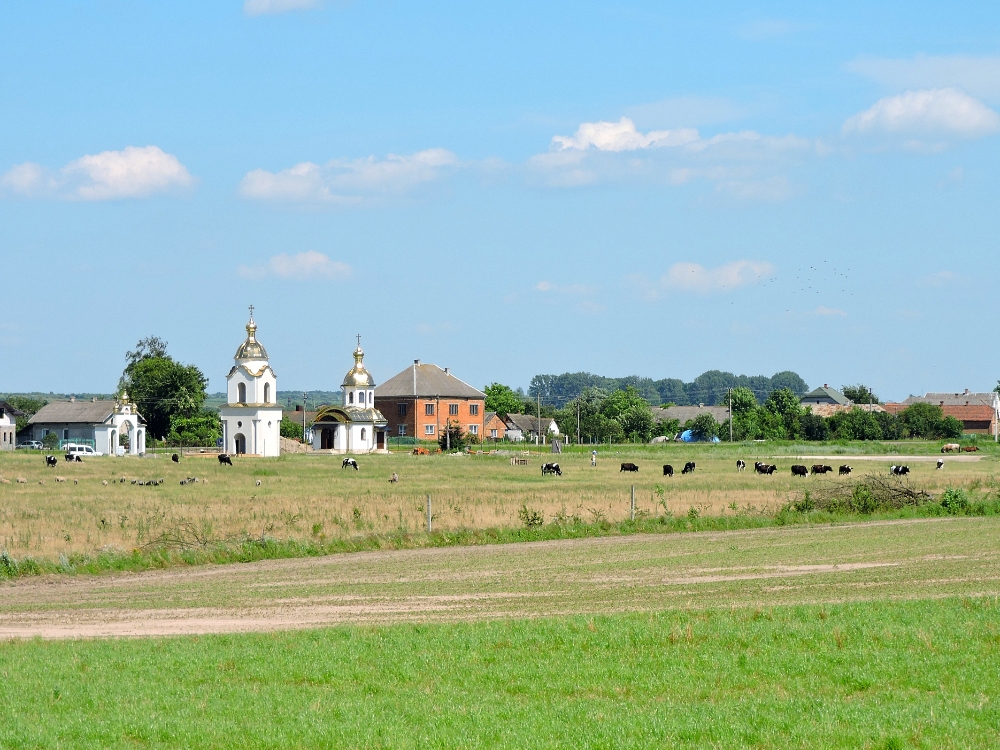
Ukraine has several qualities normally associated with nice touring destinations. The summer climate was exceedingly pleasant, never approaching excessive heat and with only a couple of short periods of rain that I had no trouble avoiding. The terrain was universally mild in all the regions I visited, and I felt like I noticed a gradual floral shift towards more of the steppe-type biome usually found farther east, though I can’t say how much of that may have been caused by humans. The countryside is heavily agricultural, though not quiet as densely so as Poland had been, so there are still some areas of forests remaining. Towns were spaced out in a generally favorable arrangement, and food and drinks were never too far away, with a level of quality and selection that is fairly typical these days. A particularly advantageous circumstance was that expenses were yet another step down from Poland, and significantly less than Sweden. For these reasons, Ukraine was where I had hoped to spend the months of more restricted movements earlier in the spring, but, unfortunately, everything shut down before I could make it there.
One of the aspects that I was unsure about, even apprehensive of, beforehand was the suitability of the road network for cycling. A network of minor roads, like the ones I enjoyed in Sweden and Poland, did not exist there in any meaningful way. There were a few, of course, but they rarely traveled in a useful direction and were often with a gravel surface. Only near the capital did quieter alternative routes appear more frequently, but even there the surface could unexpectedly change to bumpy, wet gravel at any moment. Therefore, my route in the country would almost exclusively employ the main highways. That has concurrent benefits to navigation, of course, and it sometimes a relief to think, turn onto Highway H-03, and then stay on that road for two days.
What had me feeling slightly apprehensive was the research I did before my arrival using Street View. That suggested that traffic would be fairly light, but that the road surface would frequently be bumpy, and that could slow my progress. However, I have already learned from experience that Street View can often be significantly out of date, especially in a country like Ukraine. The reality was a bit of a mixed bag. About half of the distance I traveled was over roads that had been resurfaced some time in recent years, and were in generally good condition, often with a half-width shoulder. On the other hand, because of that, and a general expansion of the economy there recently, traffic was notably heavier that what it had been when the Street View images were recorded. On the roads that were still bumpy, travel was indeed slow, especially because the bumps were the peculiar type that consist of a severely wavy surface caused by driving heavy vehicles over extra-soft asphalt. In fact, I am fairly sure I saw more than one road sign cautioning drivers that the pavement can be soft when the temperature rose above 28C. Wow. One additional circumstance of note was the presence of a relatively large proportion of vintage
motor vehicles. That usually means one thing—Obnoxious Tailpipe Emissions, but, for some unknown reason, that didn’t seem to be a problem in this case, so I can’t complain. Somewhat more of a concern was that the people in Ukraine possess a high level of the Overtaking Disease a condition so often encountered in other parts of the World, though pleasantly absent from this Tour so far. That meant that almost every time I looked forward, a fast-moving box of steel appeared to be careening towards my face.
Overall, Ukraine was a pleasing country to visit for a tour, at least for an experienced rider like me, and considering all the factors involved, roadways, traffic, urban design, expenses, and so forth, I would say that of all the other countries that I have toured in, it was most similar to a place like Argentina. That is to say, at least the portion of Argentina that is not in Patagonia, the Andes, or the Altiplano.
This visit was also my initial first-hand experience of being in the FSU proper, and many might be interested in what remains today from that earlier regime. In fact, the obvious visible reminders of that era are not as numerous as one might expect. To be sure there are examples of crumbling structures from the Communist period scattered around, but, like in Poland, these are usually found near locations where heavy industry had been built in the last century. Ugly apartments towers were present in most cities, of course, but not much more so than in cities of other countries. Small towns and villages, while not particularly architecturally beautiful, were usually pleasant enough, however. The most visible reminders of that past time were an occasional roadside monument, work of public art, or building decoration, like the three shown below.
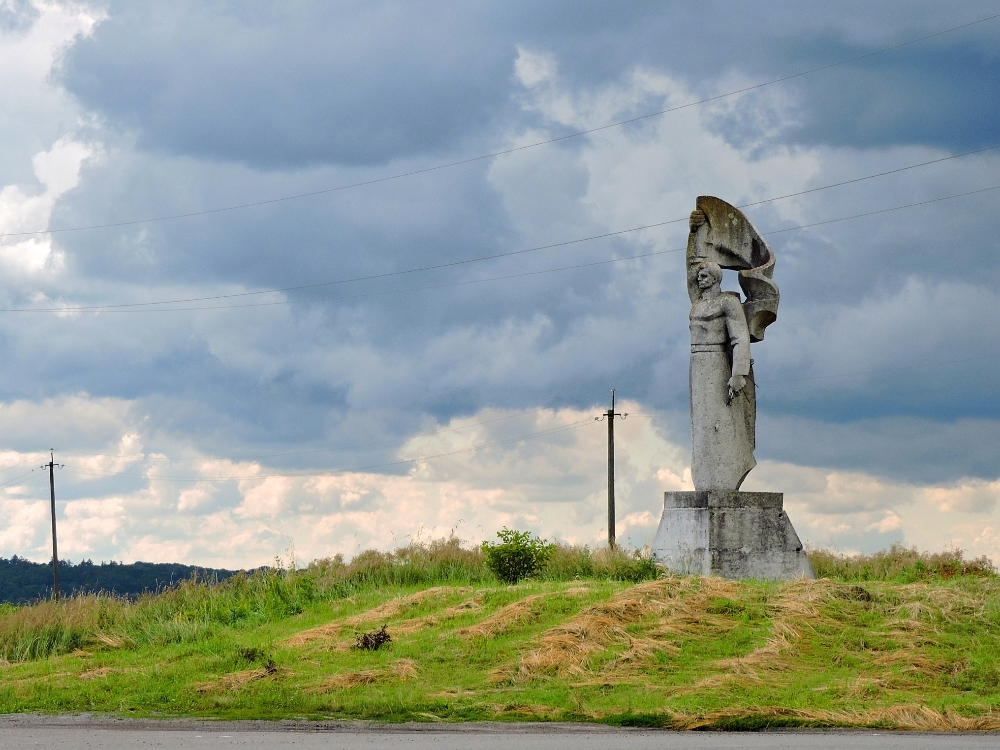
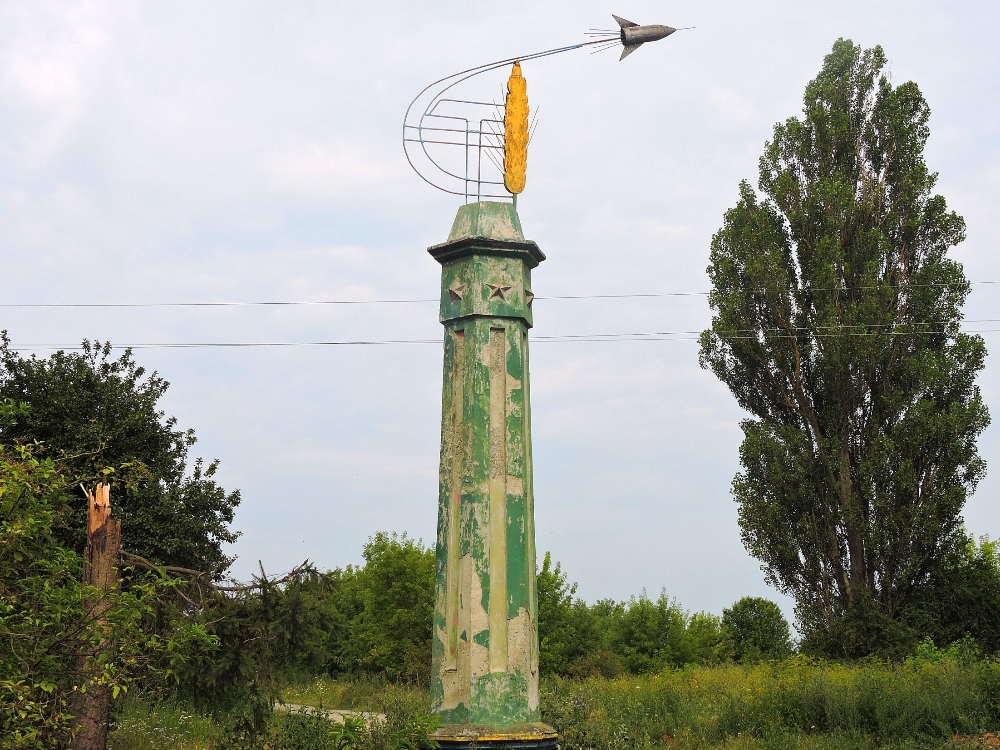
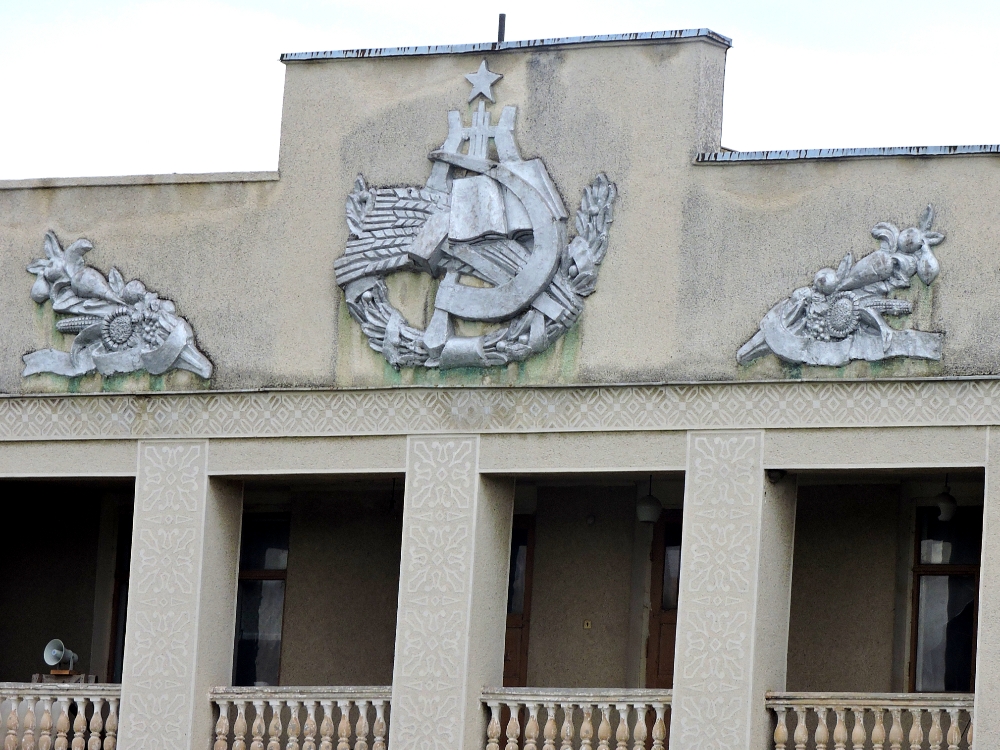
Of course, today there is little chance of finding any statues of Lenin still standing in Ukraine. Much more common are statues of the poet and Ukrainian patriot, Taras Shevchenko, who was, apparently, also bald.
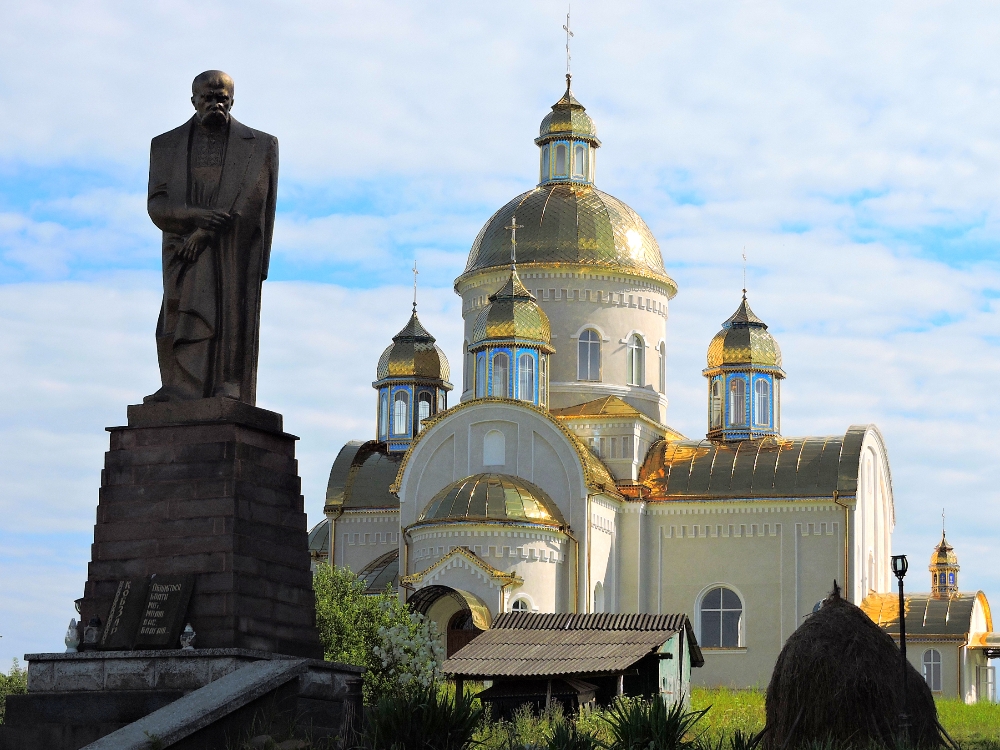
Most of the interesting places I visited in the country have already been discussed in the other sections, but there were still some other worthwhile stops along the way. The first was in the southwest of the country, the attractive city Chernivtsi, or Cernăuți in Romanian, Czernowitz in German, Czerniowce in Polish, Tschernowitz, in Yiddish. The multiple spellings of the city’s name reveal the fact that, like the region in general, the city was a major trading center and a Crossroads of Cultures. I enjoyed the way this multiculturalism is embraced by the city, such as the stone curbs in the city center, which are engraved with the city name, but using all the various spellings. Being located less than twenty kilometers from Boian, this is where my ancestors would have gone whenever they desired to visit the Big City,
and many of the elegant buildings in the center date back to the years before their emigration, so they would have recognized many of the sights today. Because I was anxious to reach Boian, I only spent a fairly short time there, but it proved to be an enjoyable place to visit, especially since the city is not usually a major stop for international tourists, and, together with the low level of travel overall, was nicely quiet. One disappointment was that the Romanian Cultural Center, just around the corner from where I was staying, was closed at the time. However, the Fine Art Museum, housed in a nice building decorated with a Greco-Roman-themed mural, was open, and its collection contained many fine examples of Bukovinian folk art.
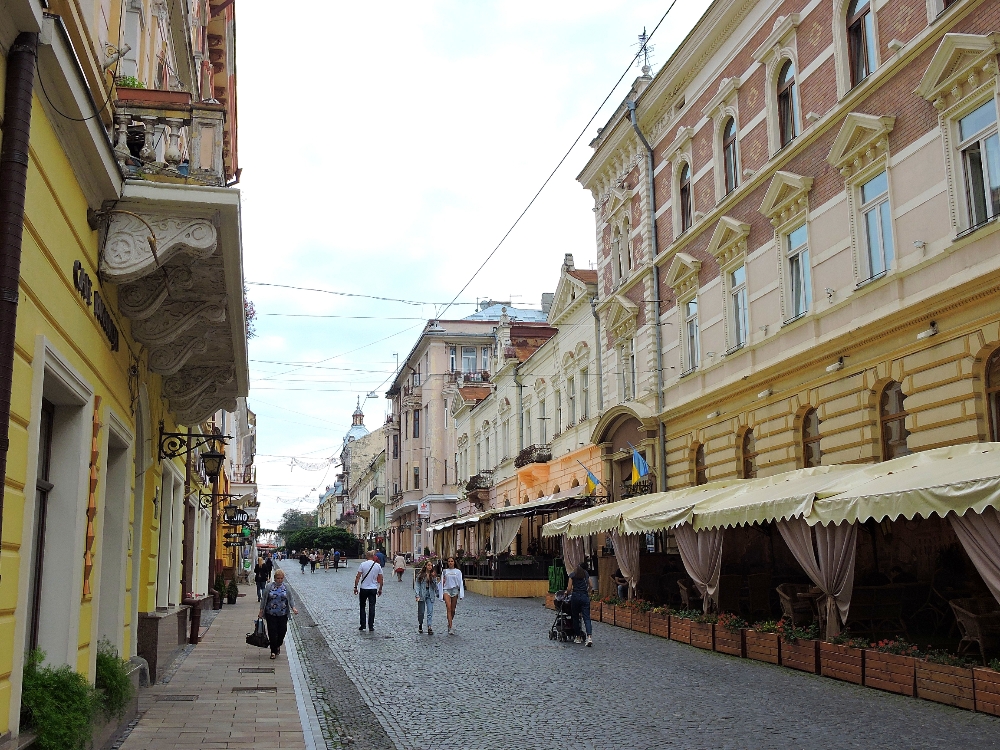
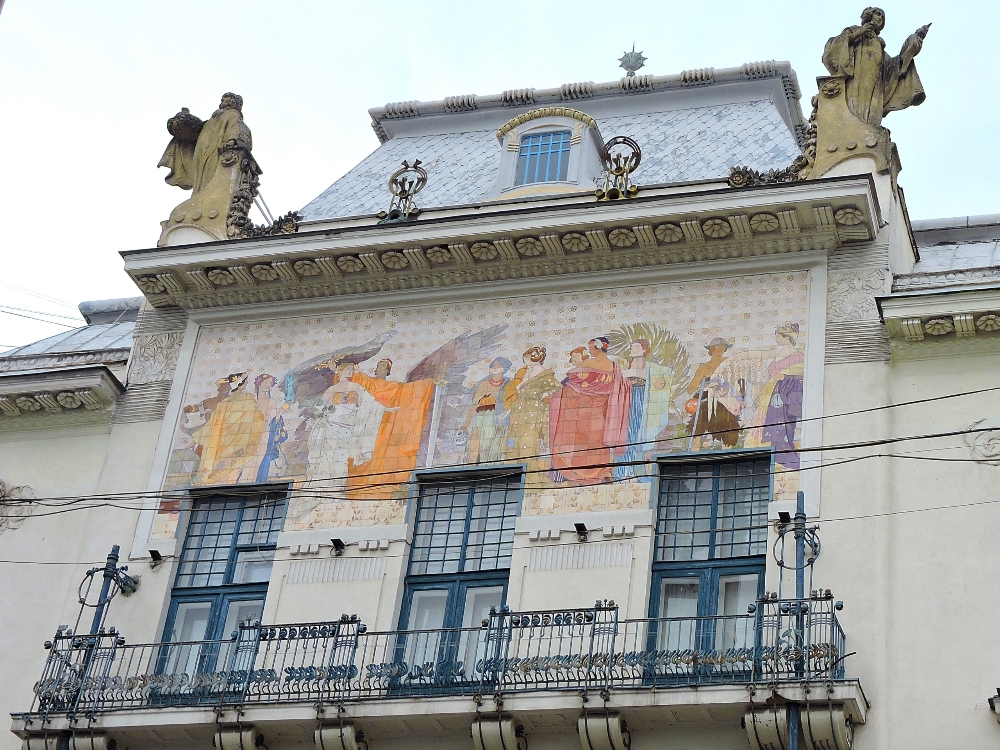
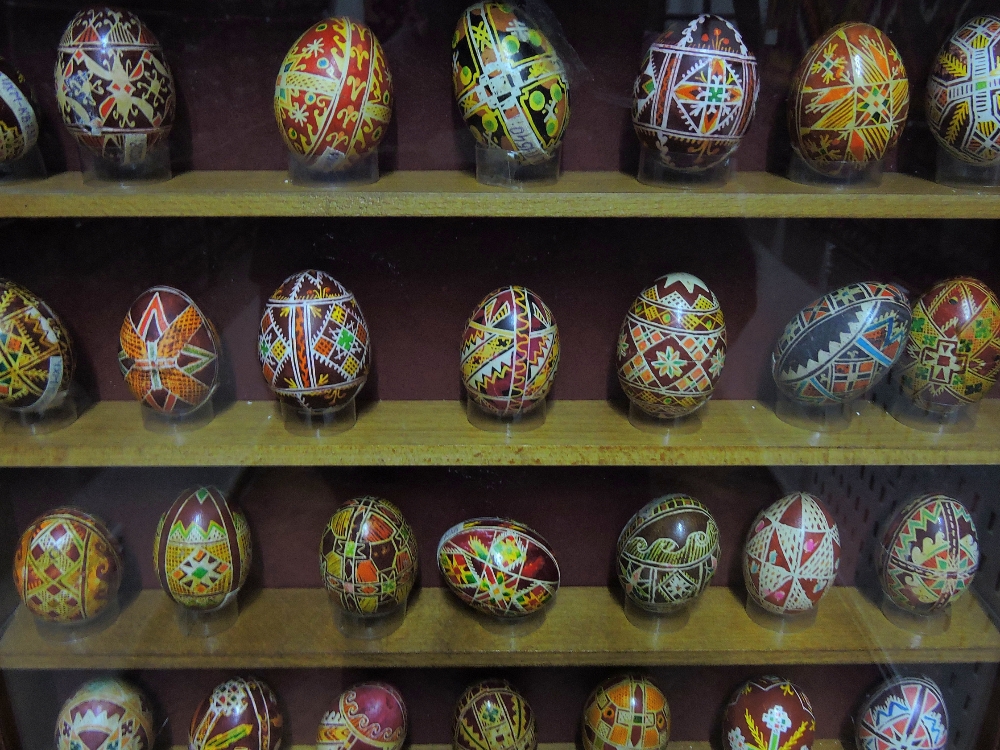
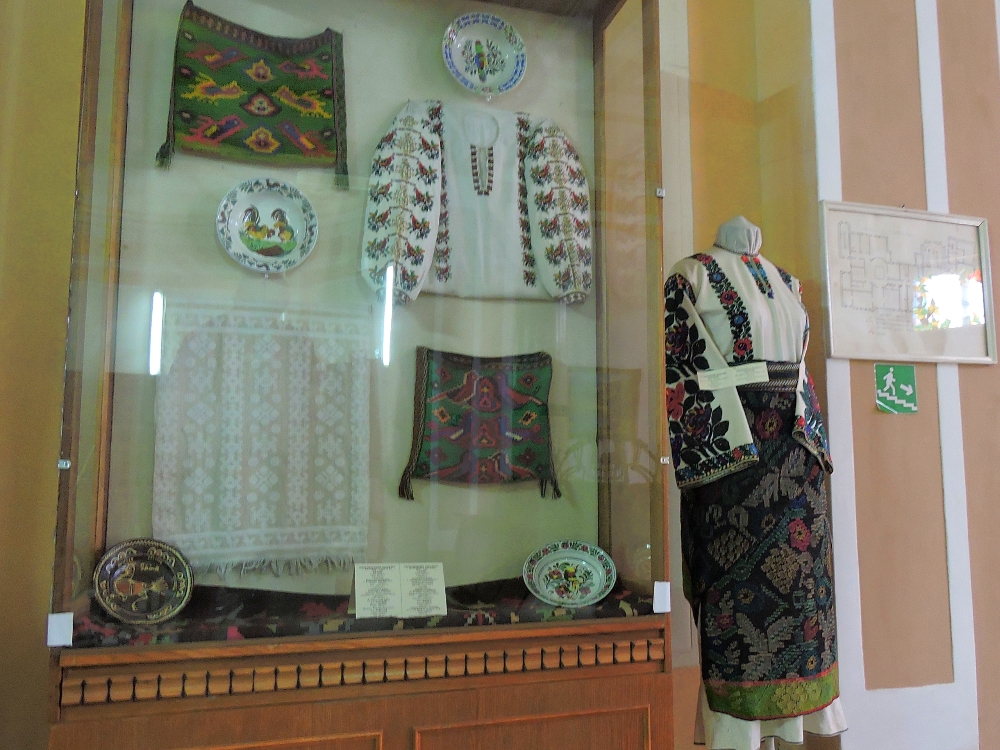
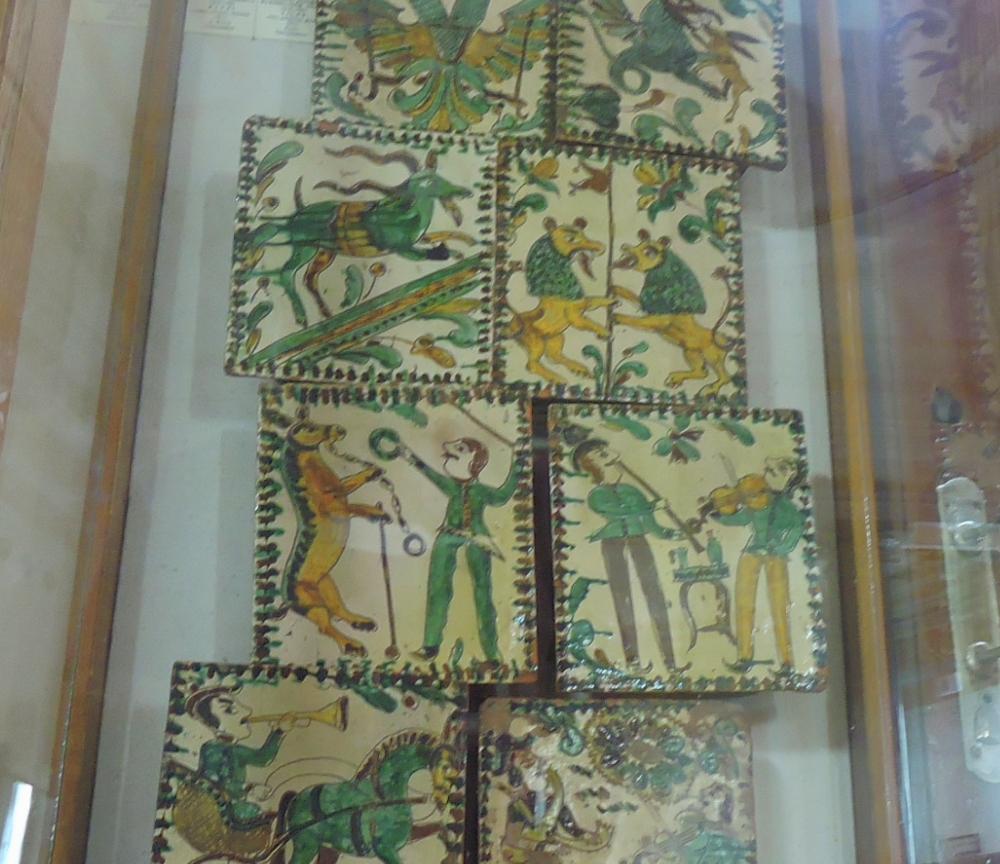
Another historic city on my route was Kam’yanets’-Podil’s’kyi, and though it was only a short day’s ride to the north from Boian, it was worth taking another day off there for a visit. Its importance throughout the centuries is rather obvious if one looks at the area on a map. That is because the relatively small Smotrych River has gifted the city a rather extraordinary geographical circumstance, by carving a shallow gorge almost perfectly in the shape of a backwards C,
with the central area extending about two kilometers north-to-south, but the opening of the C spanning only about twenty-five meters. The easily-defensible location for a settlement this provided was obvious even in Medieval times, and there has been a city in this unique spot ever since. In fact, the only similar example that comes to mind, where a river has created such a near-perfect place for secure habitation, is the Urubamba at Machu Picchu. Today, most of the original city gates, guard towers, residences, and several fine churches still exist, in various states of restoration, along with the major fortress that was placed at the opening of the C. The city, popular with Ukrainian visitors, but, once again, visited less often by international tourists, provided another relaxing and interesting stop.
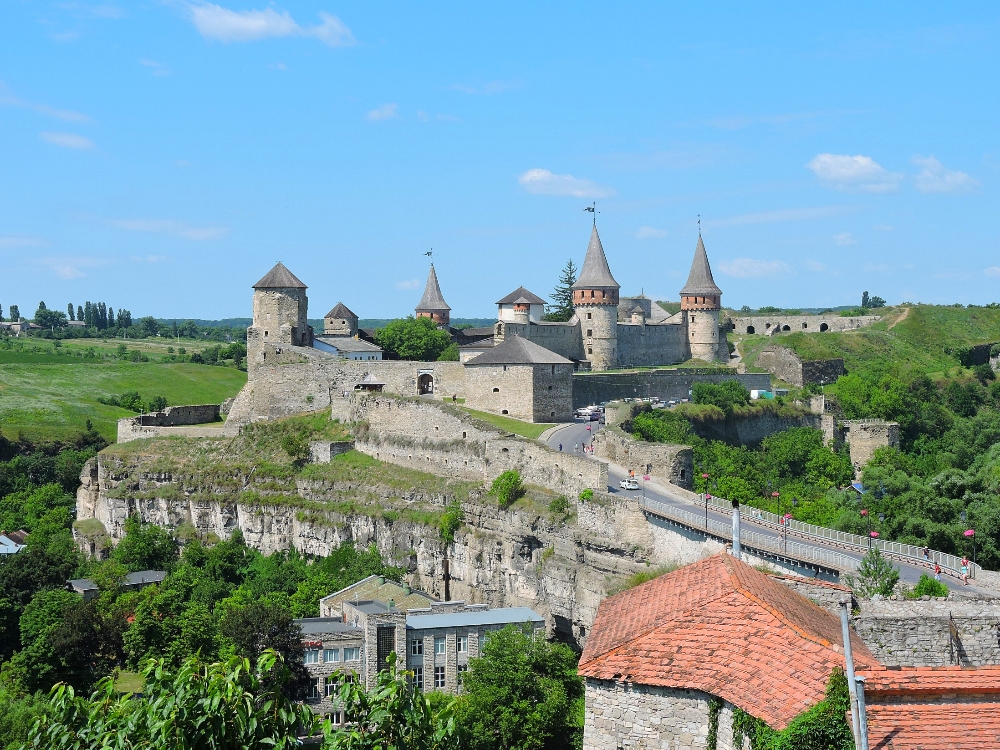
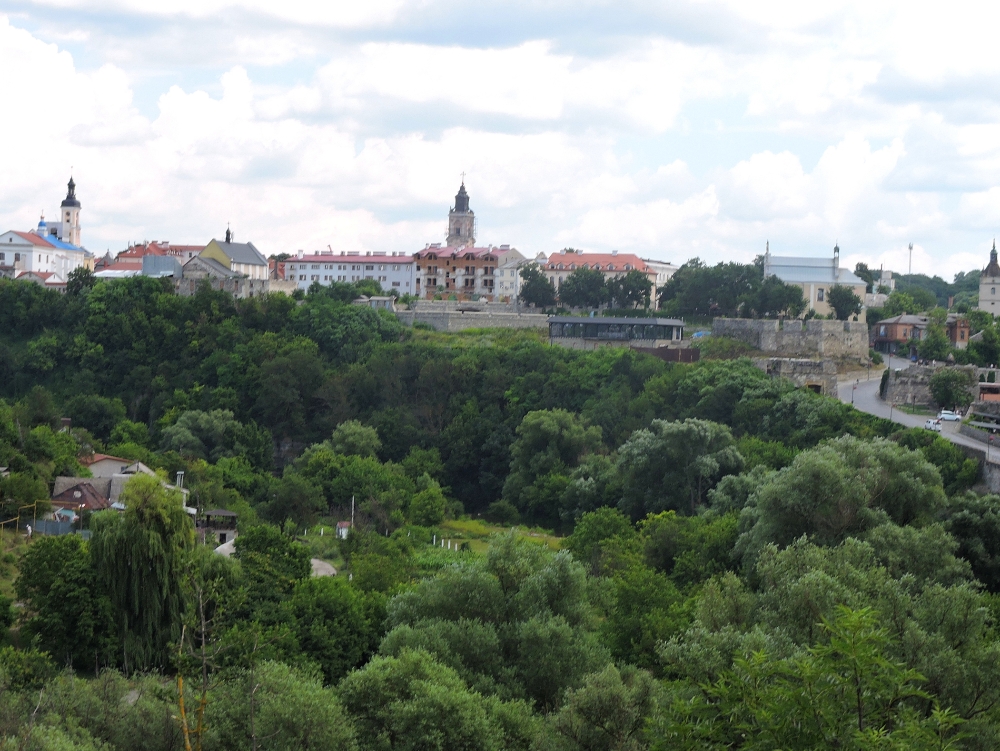
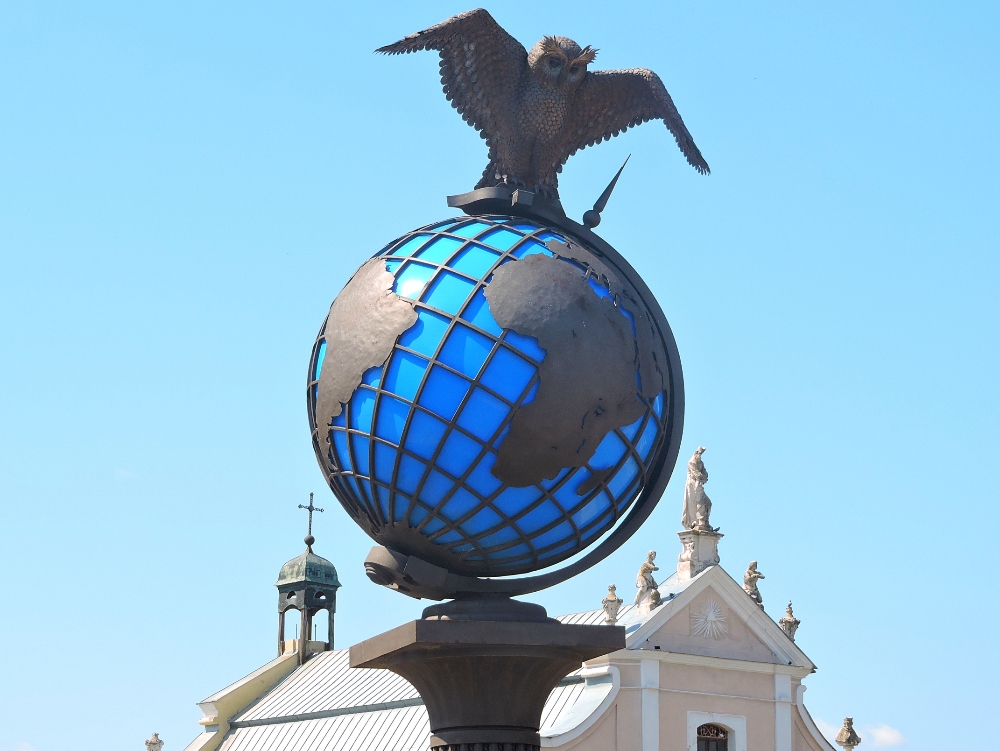
From there, my next destination was the capital Kyiv and, apart from the two oddball World Heritage Sites I have already mentioned, the distance to that city would require several relatively uneventful days of riding. The terrain continued to be mild and the weather was pleasant, though just starting to approach a temperature that might be considered to be hot, and with one torrential thunderstorm that struck just minutes after I had stopped one afternoon. Riding into Kyiv, a city with nearly three million inhabitants, was not as stressful as some other, similarly-sized cities can be. Though most roads leading into the city have been recently modernized
into expressways, finding at least one more amenable route was not impossible, with my eventual choice having just one section of tedious sprawl at the edge, transitioning to more reasonable urban riding towards the center. Eventually, I was pleased to arrive in the center, for a slightly longer-than-normal break, which I planned to use to see the local Heritage Site, take care of a few typical errands and, more importantly, try to work out some sort of plan for onward travel.
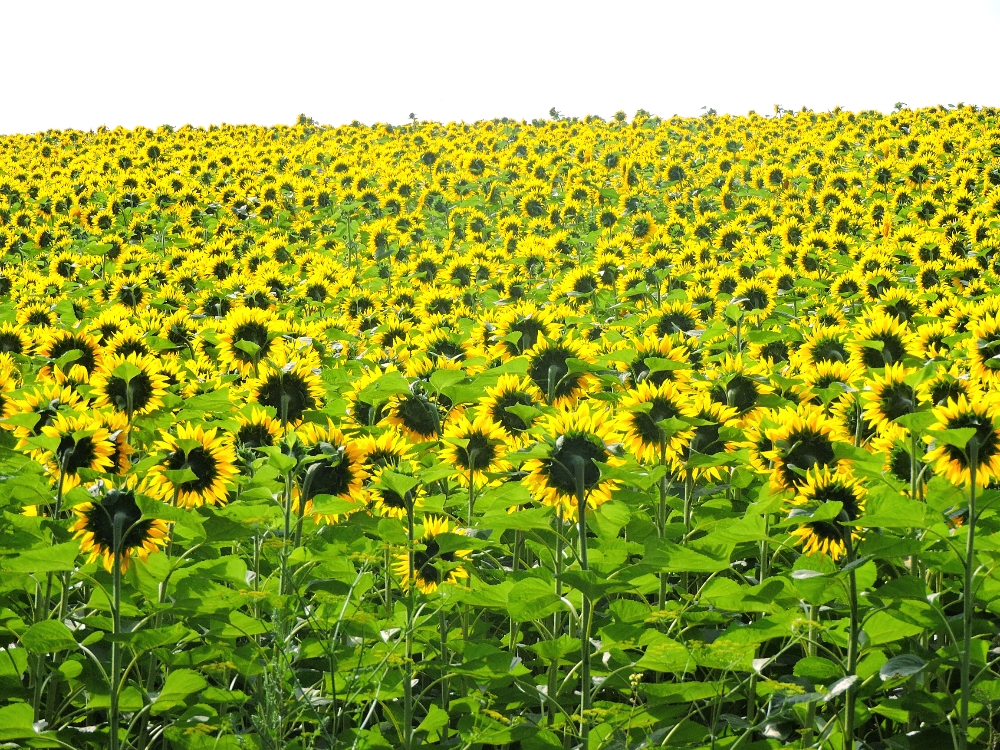
I chose to stay in the Hotel Ukraine, an interesting and historic place located right on the famous Maidan (Independence) Square. Originally named Hotel Moscow, it was built in the 1960s to be a showpiece of the reconstructed city. However, Soviet bureaucrats apparently decided that its design was a bit too elaborate, and therefore that it might overshadow similar buildings in Moscow, itself. Consequently, they ordered the architects to scale back their plans to some degree. Today, it is a fairly typical accommodation, with all the usual amenities, and only reveals its earlier design esthetic if one looks carefully. For me, it was a convenient, comfortable, and fairly affordable accommodation, with excellent views of the city, so I was quite satisfied during my stay.
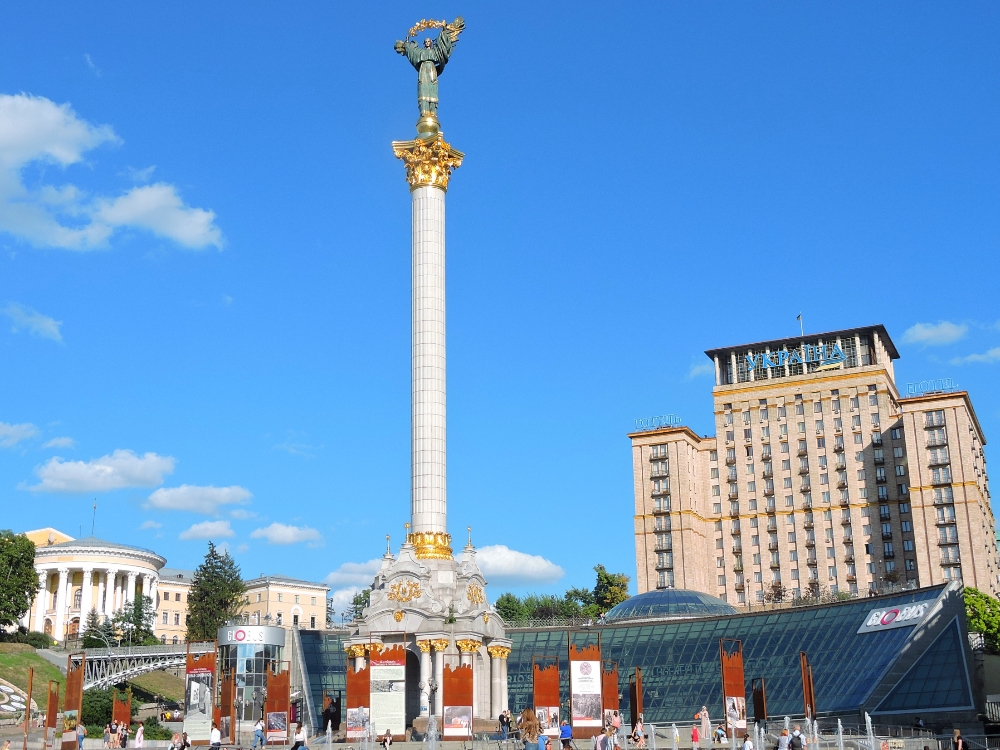
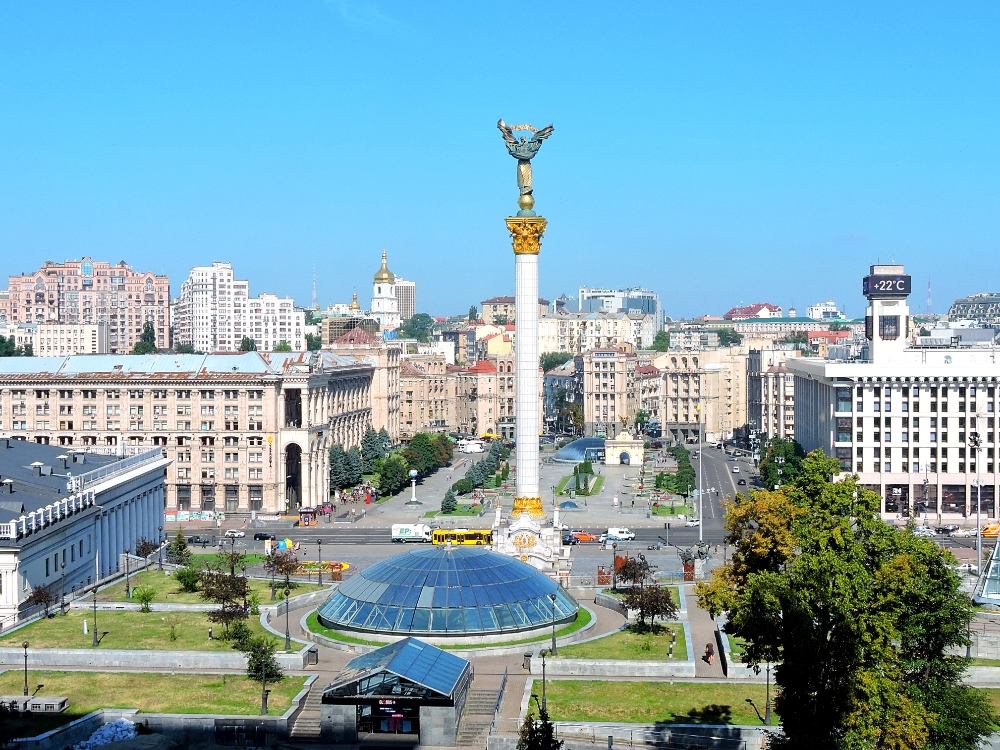
Another fun aspect of the city for me was that its Patron Saint is none other than Saint Archangel Michael. As I have mentioned before, any sort of spiritual reference doesn’t really resonate with me, but if a city is going to have a patron at all, one’s own namesake might as well fill that role. That little bit of extra connection was reinforced by the many representations of Michael to be found around the city. These included the aptly-named St. Michael’s Golden-Domed Monastery, where a nice mural depicts the more pleasing, Pacifistic Michael. Most other images show the more Militant Michael, so I can’t really claim to have much in common with all of them, however, the artistry is universally excellent.
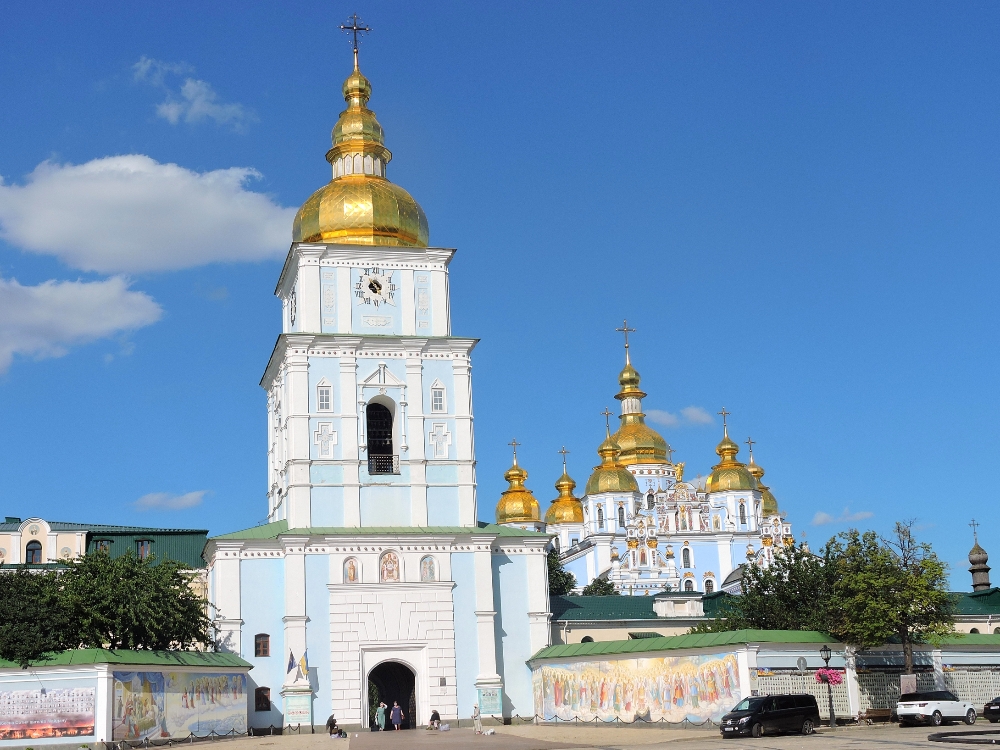
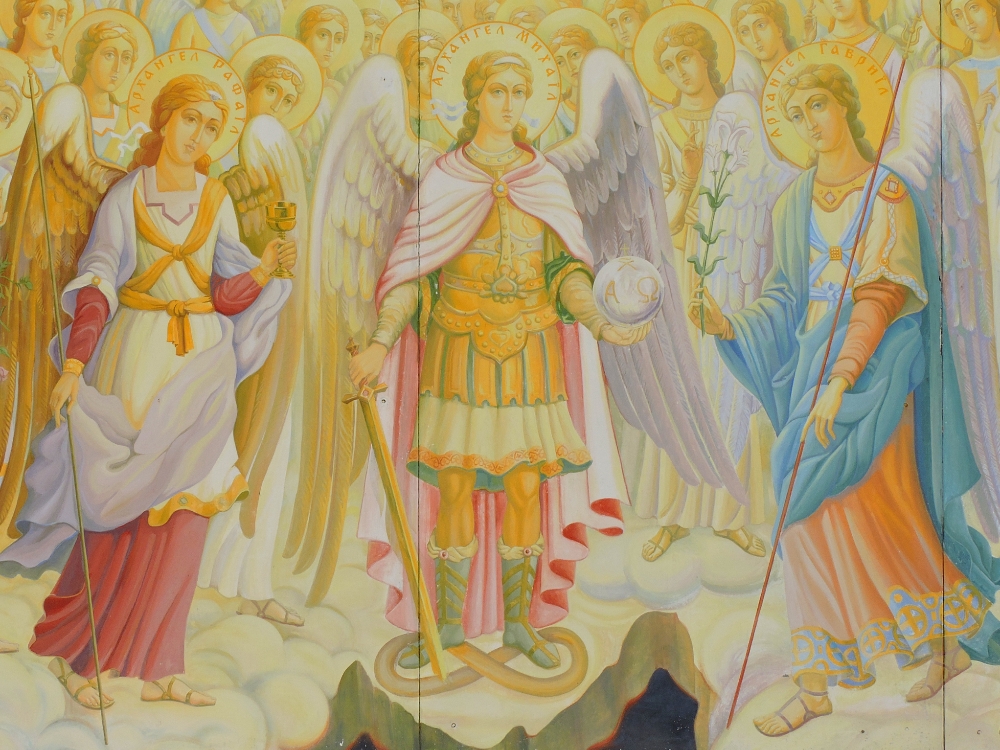
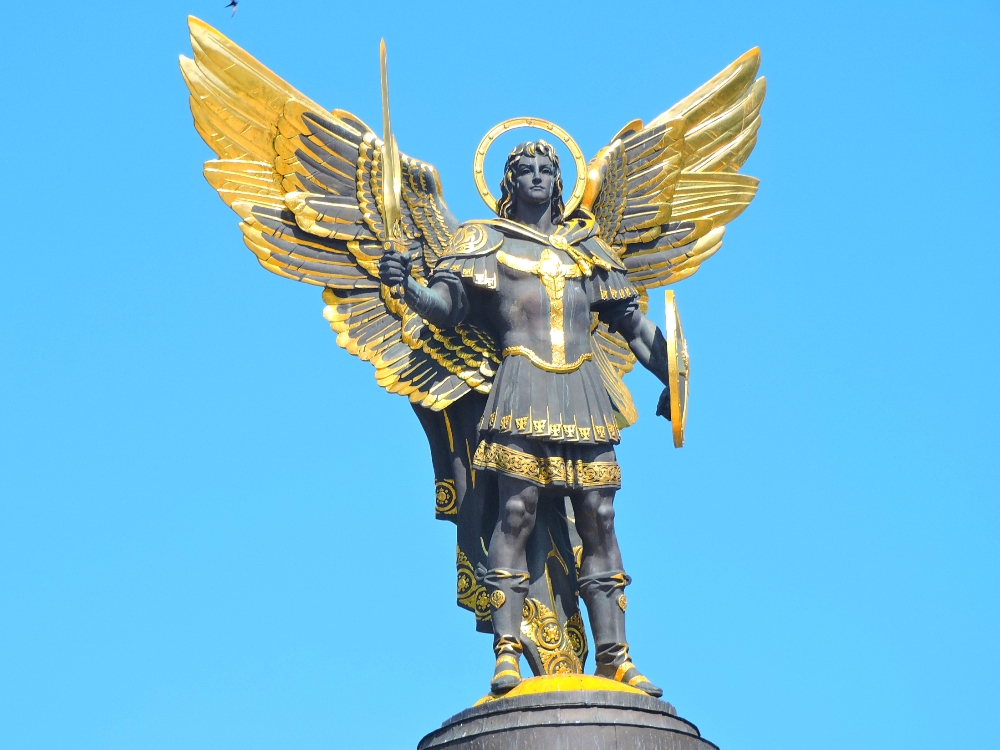
At that point my Tour in Ukraine was over, and, after some effort, I thought that I had satisfactorily resolved the issue of what to do next. With travel restrictions and border closures still in place, but slowly beginning to ease, I felt that I had come up with a strategy that, while it would force me to unpleasantly alter my style of travel a little and also to skip some intended destinations, would allow me to, more or less, get back on track, according to my original schedule. With another change of season looming in the near future, that concern was rapidly becoming one of prime importance. It didn’t work. That, however, is a story for another post.
